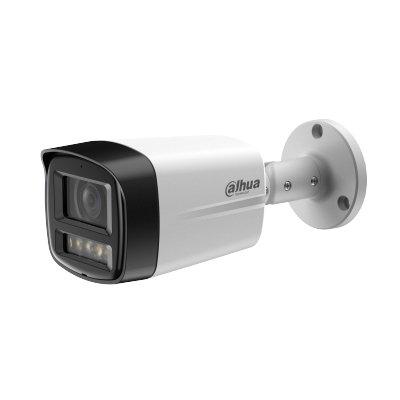Pauline Norstrom, Vice-Chairman of the BSIA’s CCTV Section discusses the newly published Code of Practice for Digital Recording Systems and the excellent advice it offers security professionals in relation to the admissibility of digital evidence in the judicial system.
The prolific uptake of digital video recording by the CCTV industry has led to a pressing need for definitive guidance where digital video images are being used as evidence in the criminal justice system. This is an area which the British Security Industry Association (BSIA) is addressing with the publication of a new Code of Practice to assist in the specification, selection, installation and operation of Digital Video Recording equipment. It is pleasing to see that here in the UK, as enthusiastic advocates of CCTV technology we are once again setting the benchmark for others to follow.
Production of the new Code of Practice has come against the backdrop of a period of extensive consultation with a number of interested bodies within the UK. These included the Association of British Insurers, Law Society and Home Office Scientific Development Branch, and input from police forensic experts and others helped to shape and strengthen the final document.
A question of evidence
Thankfully the practical experience among police officers gathering video evidence from recording systems has moved on since the days when pictures gathered from CCTV cameras were frequently discovered to be in a poor state. A combination of insufficient cleaning and maintenance, overuse of VCR tapes, inadequate lighting and lax operational procedures often led to problems in identifying potential crime culprits.
This issue was highlighted 13 years ago, when the original CCTV images showing toddler Jamie Bulger and his abductors at a Merseyside shopping centre had to be subsequently enhanced by a police technical support unit before they could be effectively used as part of the investigation.
Improvements introduced since then, partly as a result of publicity surrounding the Bulger murder case, have brought the question of quality recordings into the spotlight, as installers and system users have realised their importance. Since the mid-1990s a technical development has also played an increasingly significant role, as digital video recording (DVR) systems began to be specified for commercial use.
These days, the uptake of this technology has mirrored the way in which domestic video cassettes have been replaced by DVDs. Acceleration in the use of DVR equipment has been fuelled by falling prices, improved reliability and a variety of operational advantages. For example, compared with analogue recorders, digital alternatives provide ease of use and the ability to search for specific recorded data quickly.

A major public test of how well digital technology can cope came in the aftermath of last summer’s high profile 7/7 London terrorist explosions, and the attempted bombings in the capital a fortnight later. The massive intelligence gathering exercise by London’s Metropolitan Police and surrounding forces was significantly aided by the presence of surveillance systems covering the streets, Tube stations and buses targeted in the attacks, as well as transport links elsewhere in the capital and surrounding counties.
The pictures subsequently produced, such as those taken at Luton rail station of the 7/7 bombers on the way to their suicide missions, showed clear, identifiable images of the perpetrators and underlined the value of this monitoring method.
As analogue VCR tape is increasingly superseded by digital recording, an urgent need has arisen for definitive guidance where digital video images are being used as evidence in the criminal justice system. A number of key questions have been raised about the weight of digital video evidence and the methods used to review and extract such evidence.
A digital dimension
End users, the judicial system and the police have all become accustomed to dealing with tape based evidence over the past three decades. Naturally there will be a tendency to want to handle digital material in exactly the same manner as the older analogue. The reality is that digital video evidence is different, a difference which, if dealt with correctly, can deliver positive benefits. By their very nature digital images do not degrade, it being perfectly possible to make copies without eroding detail or quality. For the criminal justice system and the police, this obviously requires a change of approach. With a standard VCR tape, detectives had the reassurance of being able to physically touch the original as this was the medium directly recorded to. Not so with digital, as images have to be taken off the hard drive of a unit, where the original evidence is stored, and copied onto removable media.
Up until now there have not been any best practice methodologies written for storing and retrieving images on digital equipment. At the BSIA we believe that our new Code of Practice is a major development in the overall weight given to digital video evidence within a court of law.
Weight of evidence
Ensuring that digital CCTV footage stands up in court is dependent on a number of factors. These include: image quality and authenticity; storage; the method used to export images; playback; operator/owner awareness; and the need for a comprehensive audit trail.
Looking at these in turn, under image authenticity the focus is very much on the integrity of the reference image and the robustness of the audit trail from the recording device to court, factors which will naturally influence the weight that evidence can be given in court.
Following on from this, the Code of Practice considers the importance of the integrity of the DVR itself to prevent reference images stored on a digital recording product from being tampered with. Also included is a review of the potential techniques which can achieve this, specifically digital watermarking, data encryption, digital finger printing, checksumming and time/date integrity.

When it comes to the review and extraction of digital images, there is a need to ensure that the integrity of the stored reference image remains even when, for example, an enhanced version of the image is created by zooming in on a specific area.
In terms of the retrieval of images from a DVR it is important that there are a multitude of formats which can be used, with the overriding proviso that duplicated images are exact copies of the reference images and, crucially, that this can be proved in court.
With certain methods, such as copying onto removable digital media and a removable hard disk, the advice is to also look at implementing additional measures to ensure image integrity so that images are transported in a secure format.
Other areas highlighted in the new Code include the need for a verifiable, documented, audit trail from the recording of the reference images to its presentation in court and facilities for media playback.
One serious concern is that, unless these audit trails and operator procedures stand up to scrutiny in court, the Crown Prosecution Service may not be able to use the images in the first place or defence lawyers will later be able to pull holes in the evidence presented, potentially jeopardising the case and undermining a significant raison d’être of the system, not to mention wasting the police time spent in putting the case together to start with.
Authoritative guidance
The new Code of Practice, which is now publicly available, provides authoritative guidance and should supply the police, end-users, insurers and installers with the information they need to use this essential technology to its maximum potential. The demand for a digital recording systems standard isn’t limited to the UK – no equivalent exists worldwide and a good deal of interest in the British Code of Practice has been sparked by the working group’s efforts. For instance, in the US, organisations such as the FBI are already looking at how the Code could address their similar concerns.
Ultimately, we want to make sure that there is an independent benchmark in place so there can be confidence in the integrity of digital media throughout the criminal justice system.

















